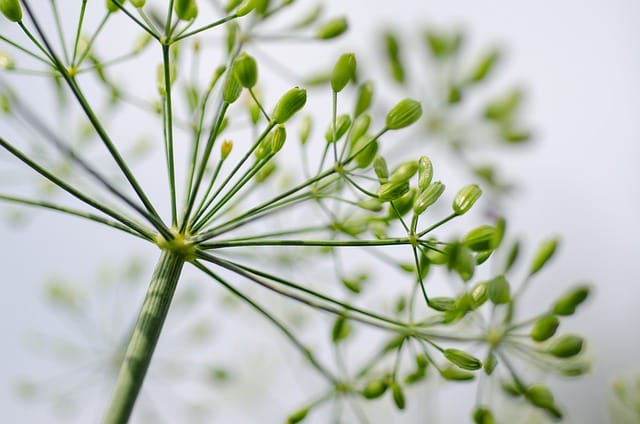How to grow Dill
Dill herb, scientifically known as Anethum graveolens, is an aromatic and flavorful herb commonly used in culinary applications

In this article:
- Introduction to Dill Herb
- Choosing the Right Growing Location
- Soil Preparation and Planting
- Watering and Drainage Needs
- Sunlight and Temperature Requirements
- Fertilizing and Nutrient Needs
- Managing Pests and Diseases
- Harvesting Dill Leaves
- Collecting Dill Seeds
- Uses and Culinary Applications of Dill
- Storing and Preserving Dill
- Fun Facts and Varieties of Dill
- Frequently Asked Questions about Growing Dill
- Conclusion and Final Tips
Introduction to Dill Herb
Dill herb, scientifically known as Anethum graveolens, is an aromatic and flavorful herb commonly used in culinary applications. It belongs to the parsley family and is native to southern Europe and western Asia. The feathery leaves and yellow flowers of dill provide a distinct taste and fragrance that enhance various dishes.
Choosing the Right Growing Location
Dill thrives in well-drained soil and requires at least 6 to 8 hours of direct sunlight daily. It is crucial to select a location in your garden that provides these conditions to ensure optimal growth and yield.
Soil Preparation and Planting
Prior to planting dill, it is recommended to prepare the soil by adding organic matter such as compost or well-rotted manure. This enriches the soil, improves drainage, and provides essential nutrients. Sow dill seeds directly into the soil at a depth of ¼ inch and space them about 18 inches apart.
Watering and Drainage Needs
Dill requires consistent moisture, but overwatering can lead to root rot. Water the plants when the top inch of soil becomes dry. It is crucial to ensure proper drainage to prevent waterlogging and maintain a healthy growing environment for your dill plants.
Sunlight and Temperature Requirements
As mentioned earlier, dill requires full sun exposure to thrive. It also prefers temperatures between 60 to 70°F (15 to 21°C). Be mindful of frost as it can damage the delicate dill plants. Ensure a frost-free period before planting.
Fertilizing and Nutrient Needs
When it comes to fertilizing dill, less is more. Excessive fertilization can result in reduced flavor and aroma. It is advisable to apply a balanced fertilizer once during the growing season or add compost to rejuvenate the soil and provide necessary nutrients.
Managing Pests and Diseases
Dill is generally resistant to pests and diseases. However, it may occasionally encounter aphids, caterpillars, or powdery mildew. Regularly inspect your plants, remove any infected portions, and consider using organic pest control methods if needed.
Harvesting Dill Leaves
The leaves of dill herb can be harvested once the plant reaches a height of 12 inches. Use scissors or pruning shears to cut the leafy stems close to the base. Regular harvesting encourages branching and a higher yield.
Collecting Dill Seeds
If you wish to collect dill seeds for future use or propagation, allow the flower heads to mature and turn brown. Cut the seed heads and place them in a paper bag. Leave them in a cool, dry place for a few weeks until the seeds have fully dried and can be removed easily.
Uses and Culinary Applications of Dill
Dill is widely used in many cuisines, particularly for flavoring fish, pickles, salads, soups, and sauces. Its distinct taste adds a fresh and tangy flavor to various dishes. It can also be used as a garnish or incorporated into dips and dressings.
Storing and Preserving Dill
To store fresh dill, wrap the stems in a damp paper towel and place it in a plastic bag or container in the refrigerator. It can usually last for up to a week. Alternatively, dill can be frozen, dried, or preserved in vinegar for prolonged use.
Fun Facts and Varieties of Dill
Did you know that dill has a long history of use in traditional medicine? It was believed to aid digestion, treat insomnia, and even cure hiccups. Additionally, there are different varieties of dill, including Bouquet, Fernleaf, Mammoth, and Hera.
Frequently Asked Questions about Growing Dill
Q: Can dill be grown in containers?
A: Yes, dill can be successfully grown in containers as long as they provide sufficient space and proper sunlight.
Q: How long does it take for dill seeds to germinate?
A: Dill seeds usually germinate within 7 to 14 days, depending on the temperature and soil conditions.
Conclusion and Final Tips
Growing dill herb can be a rewarding experience, adding flavor and fragrance to your culinary adventures. By providing the right growing conditions, taking care of water and nutrient needs, and following proper harvesting and storing techniques, you can enjoy fresh dill leaves and seeds throughout the season.
Remember to experiment with dill in various recipes to truly appreciate its unique taste and aroma. Happy gardening and happy cooking!
